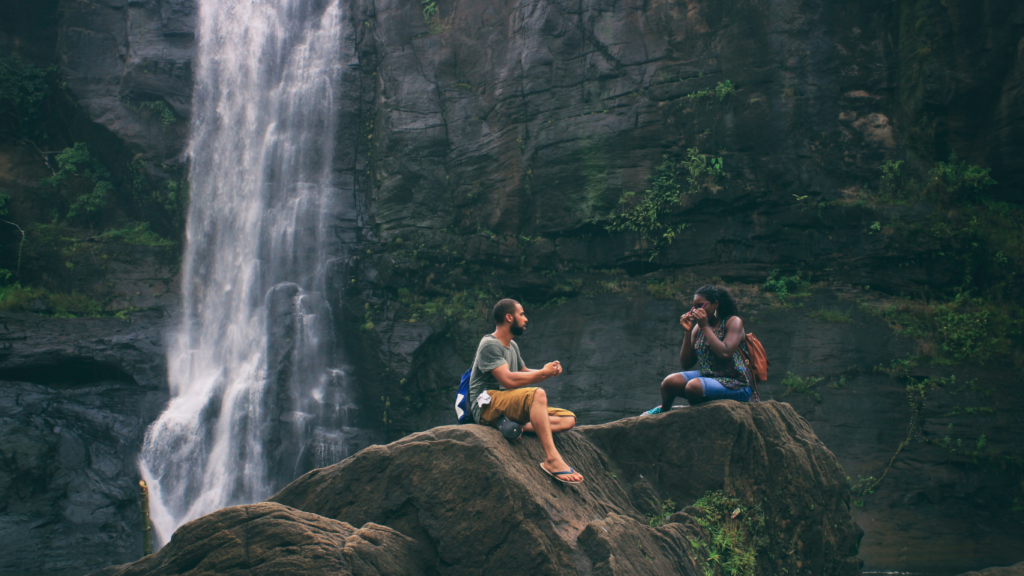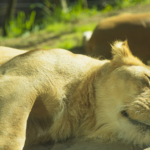I’ve always loved chasing waterfalls, and Kalu Waterfall in Maharashtra’s Malshej Ghat is one that stole my heart. It’s the tallest waterfall in the region, plunging from a jaw-dropping 1200 feet, surrounded by lush forests and misty mountains. The first time I heard the roar of the water and saw the misty spray, I knew this place was special. Kalu Waterfall isn’t just a pretty sight—it’s an adventure, a trek through nature’s beauty, and a perfect escape from city life. Located near Khireshwar village, it’s a seasonal wonder that comes alive during the monsoon, drawing nature lovers and trekkers from Mumbai and Pune. In this article, I’ll share everything about Kalu Waterfall—what it is, how to visit, what makes it unique, and tips for a great trip. Let’s dive into this amazing destination and plan your next adventure!
What Is Kalu Waterfall?
Kalu Waterfall is a stunning natural wonder in Malshej Ghat, Maharashtra, known for being the tallest waterfall in the area at 1200 feet. It starts from the Harishchandragad mountains and flows through Khireshwar village, cascading down in five beautiful layers. During the monsoon, from June to September, the waterfall is at its best, with water gushing down and the surrounding forests turning bright green. It’s a seasonal waterfall, so it’s not as impressive in the dry months, but come September to October, it’s perfect for a visit. The area around it, called God’s Valley, is filled with dense forests, streams, and wildlife, making it a paradise for nature lovers. Whether you’re a trekker or just someone who loves a good view, Kalu Waterfall offers a mix of adventure and peace that’s hard to beat.
Why Is It Famous?
Kalu Waterfall is famous for its height—1200 feet makes it the tallest in Malshej Ghat. Its five-layer drop is a sight to behold, especially during the monsoon when the water flows strong. Travellers often highlight its beauty, with some even mentioning how strong winds can make the water appear to flow upward, creating a magical “reverse waterfall” effect that’s a big draw for visitors.
What’s the Best Time to Visit?
The best time to visit Kalu Waterfall is from July to October. During the monsoon (June to September), the waterfall is in full force, and the greenery around it is lush. September to October is ideal for trekking, as the rain slows down, making trails safer. But be careful—monsoon treks can be slippery, and heavy rain might make river crossings risky, so always check the weather first.
How Can You Reach Kalu Waterfall?
Getting to Kalu Waterfall is part of the adventure! It’s located near Khireshwar village in Malshej Ghat, about 130-150 km from Mumbai and 120 km from Pune. If you’re driving, it’s a scenic 3-4 hour journey from Mumbai via Kalyan and Murbad. From Pune, it takes about 3 hours through Alephata. For public transport, take a train to Kalyan from Mumbai (1-1.5 hours), then a bus to Khubi Phata, and walk or hire a taxi to Khireshwar—it’s about 3.5 km from there. From Pune, catch a bus to Alephata, then another to Khubi Phata. Once in Khireshwar, the trek to the waterfall’s viewpoint is an easy 4-5 km walk. The route is filled with gorgeous views of misty hills and forests, making the journey just as exciting as the destination itself.
What Are the Trekking Routes?
There are two main routes to see Kalu Waterfall. The easiest is from Khireshwar village—a 4-5 km flat trail that takes 60-90 minutes to reach the top viewpoint. It’s perfect for beginners. The other route, via Thitabi village, is a 5-6 km jungle trail to the waterfall’s base. This one’s more adventurous, with river crossings, and takes about 2 hours. You might need a local guide for this route, especially during monsoon.
How to Travel from Mumbai or Pune?
From Mumbai, drive or take a train to Kalyan, then a bus to Khubi Phata, and reach Khireshwar village by taxi or walking. From Pune, drive via Alephata or take a bus to Alephata, then another to Khubi Phata. The nearest airport is Mumbai’s Chhatrapati Shivaji Maharaj International Airport, 100 km away, and from there, you can hire a taxi to Malshej Ghat. Both cities offer scenic routes, so the journey is a treat!
What Makes Kalu Waterfall Unique?
Kalu Waterfall isn’t just another waterfall—it’s a whole experience. Its 1200-foot drop in five layers is breathtaking, and the surrounding God’s Valley is like stepping into a nature painting with dense forests and misty peaks. During monsoon, strong winds sometimes push the water upward, creating a “reverse waterfall” effect that’s magical to see. The area is also rich in wildlife—you might spot birds like quails or even flamingos in Malshej Ghat. The trek itself is special, passing through streams and lush trails with views of Harishchandragad and other peaks. Unlike crowded tourist spots, Kalu Waterfall feels untouched, offering a peaceful retreat. Whether you’re at the top viewpoint or the base, the mix of adventure and serenity makes this place truly one-of-a-kind.
What Wildlife Can You See?
Malshej Ghat around Kalu Waterfall is a haven for wildlife. You can spot birds like cuckoos, quails, and flamingos, especially during monsoon. The dense forests are home to small mammals and rare plants, too. It’s a great spot for birdwatching, so bring binoculars if you’re a nature enthusiast. The area’s biodiversity adds an extra layer of wonder to your visit.
Why Is the Scenery So Special?
The scenery at Kalu Waterfall is straight out of a dream. The 1200-foot waterfall plunges through five layers, surrounded by misty hills and green valleys. The trek offers views of peaks like Harishchandragad and Bhairavgad, and there’s even a hidden waterfall nearby in a gorge. The lush forests and streams along the trail make every step picture-perfect, especially after the rains.
What Activities Can You Do?
Kalu Waterfall is perfect for more than just sightseeing. The trek itself is a big draw—whether you take the easy Khireshwar route or the adventurous Thitabi trail, you’ll love walking through forests and crossing streams. At the base, you can relax by the water, though swimming isn’t safe during heavy monsoon flows. Birdwatching is amazing here, with so many species around. Some groups offer rappelling down the waterfall’s 1200-foot drop in five stages, which is thrilling but needs expert guides. Photography lovers will be in heaven with the misty views and cascading water. If you’re with friends, pack a picnic to enjoy near the base. Nearby, you can also explore Harishchandragad Fort or the Aadrai jungle trek for more adventure. There’s something for everyone at Kalu Waterfall!
Can You Rappel at the Waterfall?
Yes, rappelling at Kalu Waterfall is an option for thrill-seekers! The 1200-foot drop is done in five stages—starting at 430 feet and ending at 70 feet. It’s a challenging activity, best during lighter rains, and requires expert guides with safety gear. Many adventure groups in Mumbai and Pune organize these trips, but always check the weather and group credentials first.
What Else Is Nearby?
There’s plenty to explore near Kalu Waterfall. Harishchandragad Fort, 15 km away, offers a challenging trek with stunning views and ancient ruins. The Aadrai jungle trek and Naneghat are also close, known for their scenic trails. Malshej Ghat itself is a birdwatcher’s paradise, and you can visit other waterfalls like Nanemachi. These spots make your trip even more exciting.
What Challenges Should You Know About?
Visiting Kalu Waterfall is amazing, but there are a few challenges to keep in mind. The monsoon makes the trails slippery, and river crossings on the Thitabi route can be risky—sometimes you need a rope or zipline, which locals might charge for (around 100 rupees). Heavy rain can also make it hard to reach the base, so September or October is safer. The trek isn’t tough, but you’ll need good shoes and some fitness for the 4-6 km walk. There are no washrooms on the trail, only at the base village, so plan accordingly. Bring water, snacks, and rain gear, as facilities are limited. Despite these challenges, the beauty of Kalu Waterfall makes it all worth it—just come prepared and check the weather.
What Should You Pack?
Pack smart for Kalu Waterfall! Bring good trekking shoes, 2 liters of water, and snacks like biscuits or chocolates. A raincoat or jacket is a must during monsoon, along with a plastic bag for wet clothes. Carry a waterproof cover for your phone, sunglasses, and personal medicines if needed. A small backpack works best—no trolley bags, please!
What Are the Risks During Monsoon?
Monsoon treks to Kalu Waterfall can be tricky. The trails get slippery, and river crossings, especially on the Thitabi route, can be dangerous if the Kalu River swells—crossing is only safe from September onward. Heavy rain might block the base route, and flash floods are a risk, so always check weather updates and avoid going if it’s pouring heavily.



